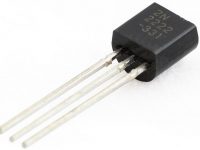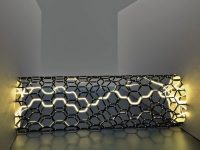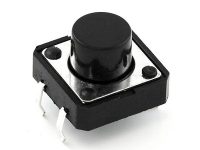‘Graphene Quilts’ To Cool High-Power GaN Devices
Gallium Nitride is a binary semiconductor commonly used in bright LEDs since 1990’s and used in wireless applications due to its high voltage operation and high efficiency operation. Since 2006 Graphene Transistors have been offered commercially. But like all other high power devices, the problem is to remove significant amount of dissipated heat which has to be removed fast and efficiently. Various Thermal Management solutions such as Composite substrates or Flip-Chip Bonding (also known as Controlled Collapse Chip connection or its acronym, C4) have been attempted but the applications are still been limited because of the increase in temperature due to the power dissipation.
A group of researches form University of California and Riverside Bourns College of Engineering had developed a technique to cool GaN devices. The group demonstrated that the hot spots in GaN can be cooled to much as 20°C by the introduction of alternate heat escaping channels made up of Graphene multi-layers, which are good heat conductors. This reduction in temperature increases the life time of the device by a factor 10.
You can read more about the new approach to Thermal Management of Power Electronics in this paper in Nature Communications. Alexander Balandin, professor of electrical engineering and founding chair of Materials Science and Engineering program at University of California-Riverside; and three of his electrical engineering graduate students ( Ph.D. candidates Zhong Yan, Guanxiong Liu and Javed Khan, who earned his Ph.D, started working in Intel Corporation in this year) was achieved this breakthrough in Thermal Management of GaN Power Transistors.
 They designed and build graphene – graphite quilts on the top of the GaN Transistors, which is to remove and spread heat from the hot spots. The figure shows the cross-sectional schematic of the GaN HFET with graphene quilt for heat spreading.
They designed and build graphene – graphite quilts on the top of the GaN Transistors, which is to remove and spread heat from the hot spots. The figure shows the cross-sectional schematic of the GaN HFET with graphene quilt for heat spreading.
The graph shows the current-voltage characteristics of GaN HFET with and without graphene-based heat spreaders. From this we can find the improvement in the saturation current due to lower junction temperature through using Graphene Quilts.
The researchers demonstrated that for transistors operating at large power levels temperature of hot spots can be lowered to 20°C by using micro-Raman spectroscopic thermometry. Graphene Quilts can perform even better in GaN devices on more thermally resistive substrates.














